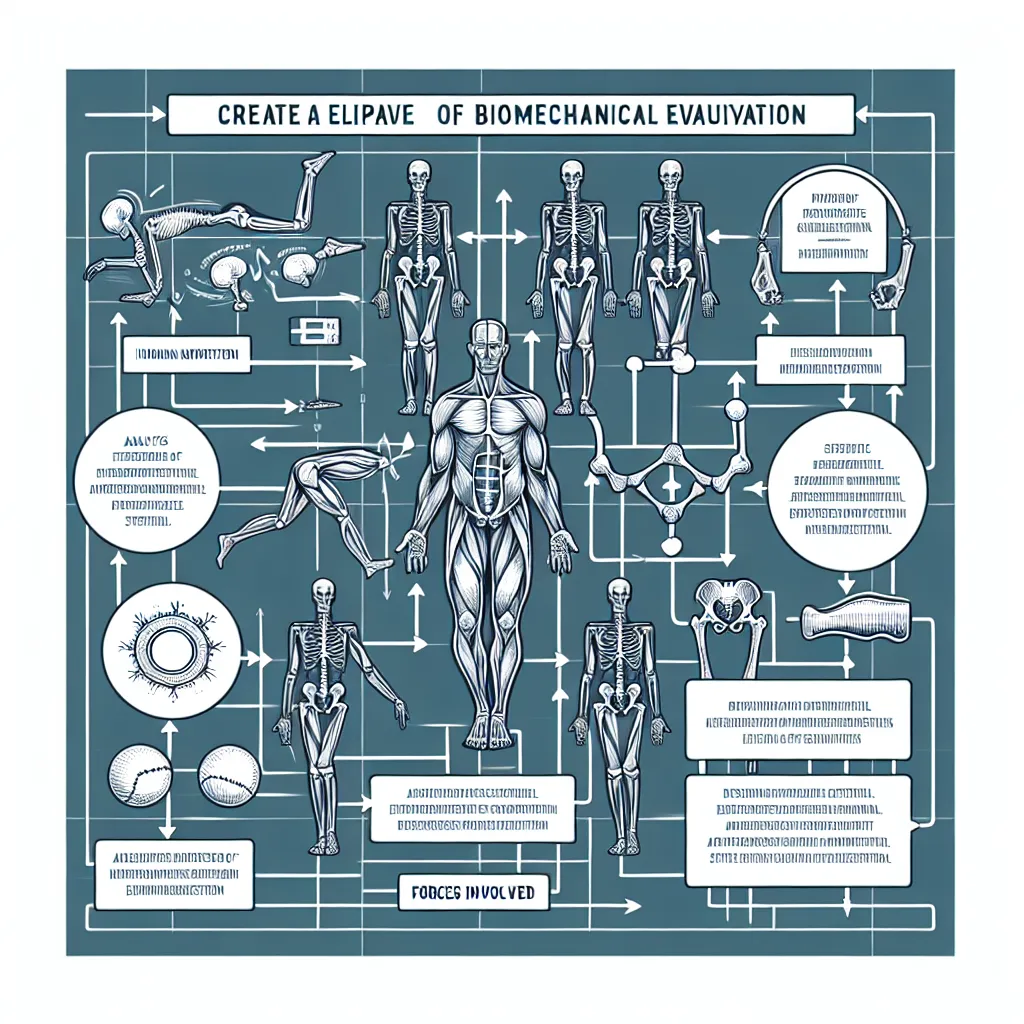“Biomechanical assessment” is a crucial term in the field of sports science and physical therapy. Let’s break it down:
Definition: A biomechanical assessment is a detailed analysis of how a person’s body moves during specific activities, focusing on the mechanics of movement and identifying any abnormalities or inefficiencies.
Part of speech: Noun phrase
Pronunciation: /ˌbaɪəʊmɪˈkænɪkəl əˈsesmənt/
This term is particularly relevant for IELTS test-takers interested in sports science, medicine, or related fields. Understanding its usage and context can significantly enhance your vocabulary for the IELTS exam.

Context and Usage of “Biomechanical Assessment”
Examples in Context
-
The sports physiotherapist conducted a thorough biomechanical assessment of the athlete’s running gait to identify any potential causes of recurring knee pain.
Analysis: This sentence demonstrates the practical application of biomechanical assessment in sports medicine, highlighting its role in injury prevention and treatment.
-
Before designing a customized training program, the fitness coach performed a biomechanical assessment to understand the client’s movement patterns and limitations.
Analysis: Here, we see how biomechanical assessment is used as a preliminary step in creating personalized fitness plans, emphasizing its importance in tailored exercise regimens.
-
The research study on elderly fall prevention included a comprehensive biomechanical assessment of participants’ balance and gait.
Analysis: This example illustrates the use of biomechanical assessment in scientific research, particularly in studies related to geriatric health and safety.
-
Advanced technologies like 3D motion capture systems have revolutionized the accuracy and depth of biomechanical assessments in professional sports.
Analysis: This sentence highlights the technological advancements in the field of biomechanical assessment, showcasing its evolving nature in high-level sports.
-
The dance instructor incorporated regular biomechanical assessments into her teaching methodology to help students improve their technique and prevent injuries.
Analysis: This example demonstrates the application of biomechanical assessment in performing arts, underlining its versatility across different physical disciplines.
Common Contexts
Biomechanical assessment is frequently encountered in:
- Sports medicine and rehabilitation
- Fitness and personal training
- Ergonomics and occupational health
- Research in movement sciences
- Orthopedics and prosthetics design
Frequency in IELTS
While “biomechanical assessment” is not a high-frequency term in general IELTS tests, it may appear in:
- Reading passages related to sports science or medical advancements
- Listening sections discussing health or fitness topics
- Writing Task 2 essays on topics related to health, sports, or technology in medicine
- Speaking Part 3 discussions about sports, health, or scientific research
Understanding this term can give you an edge in these scenarios, demonstrating a sophisticated vocabulary in specific contexts.
Vocabulary Analysis
Word Structure
- Bio-: prefix meaning ‘life’ or ‘biological’
- Mechanical: relating to machines or mechanisms
- Assessment: the act of evaluating or estimating
Understanding these components helps in grasping the full meaning and remembering the term more effectively.
Synonyms and Antonyms
Synonyms (with definitions and pronunciations):
-
Movement analysis
Definition: The study of body movements and mechanics
Pronunciation: /ˈmuːvmənt əˈnæləsɪs/ -
Kinetic evaluation
Definition: Assessment of motion and forces involved in movement
Pronunciation: /kɪˈnetɪk ɪˌvæljuˈeɪʃən/ -
Postural assessment
Definition: Examination of body posture and alignment
Pronunciation: /ˈpɒstʃərəl əˈsesmənt/
Antonyms:
While direct antonyms are not applicable, contrasting terms could include:
-
Static analysis
Definition: Examination of structures at rest, not in motion
Pronunciation: /ˈstætɪk əˈnæləsɪs/ -
Subjective evaluation
Definition: Assessment based on personal impressions rather than measurable data
Pronunciation: /səbˈdʒektɪv ɪˌvæljuˈeɪʃən/
Memorization Techniques
Mind Mapping
Create a mind map with “Biomechanical Assessment” at the center, branching out to related concepts:
- Technologies used (e.g., motion capture, force plates)
- Applications (e.g., injury prevention, performance enhancement)
- Professionals involved (e.g., physiotherapists, biomechanists)
- Body parts analyzed (e.g., joints, muscles, skeletal structure)
Storytelling Technique
Imagine a story: “The curious case of the limping athlete”
An Olympic runner was experiencing unexplained pain. The team’s physiotherapist suggested a biomechanical assessment. Using high-speed cameras and pressure-sensitive mats, they analyzed the athlete’s running gait. The assessment revealed a slight imbalance in hip rotation, leading to targeted exercises that resolved the issue, allowing the athlete to compete pain-free.
This narrative intertwines the concept with a memorable scenario, making it easier to recall the term and its significance.
Practice Exercises
Exercise 1: Sentence Completion
Complete the following sentences using “biomechanical assessment” or related terms:
- The __ __ helped identify the root cause of the golfer’s persistent back pain.
- Advanced __ techniques have revolutionized how we understand and treat sports injuries.
- Before prescribing orthotics, the podiatrist conducted a thorough __ of the patient’s walking pattern.
Exercise 2: IELTS Writing Task 2 Practice
Topic: Some people believe that advancements in sports technology have made competitions unfair. To what extent do you agree or disagree?
In your response, consider incorporating the concept of biomechanical assessment and its impact on sports performance and fairness in competitions.
Exercise 3: Speaking Practice
Imagine you’re explaining the importance of biomechanical assessment to a friend interested in becoming a professional athlete. Prepare a 1-minute speech covering:
- What biomechanical assessment is
- Why it’s important in sports
- How it can benefit athletes
Conclusion
Mastering the term “biomechanical assessment” and its related vocabulary can significantly enhance your performance in the IELTS test, especially in contexts related to sports, health, and technology. This sophisticated term demonstrates a deep understanding of scientific approaches in physical analysis and can elevate your language proficiency in relevant discussions.
Remember to practice using this term in various contexts, whether in writing essays, participating in speaking exercises, or analyzing reading passages. The key to retaining and effectively using such specialized vocabulary is regular practice and application in diverse scenarios.
We encourage you to share your experiences with learning and using this term in the comments section below. How might you incorporate “biomechanical assessment” into your IELTS preparation? Do you have any questions about its usage or related vocabulary? Your engagement and practice are crucial steps towards mastering this valuable addition to your IELTS vocabulary arsenal.